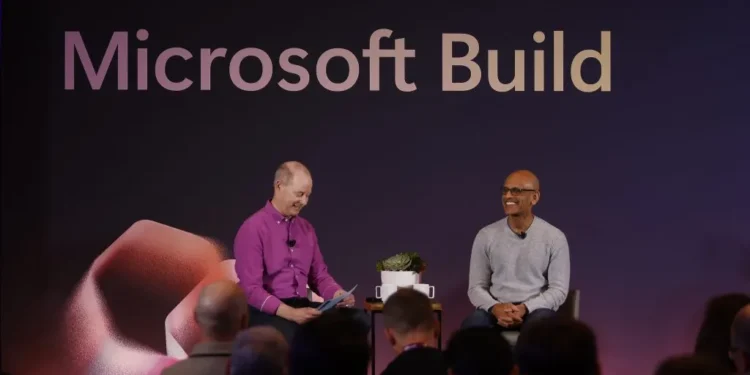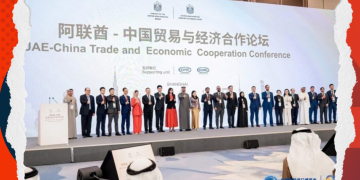independent developers looking to reach Windows users, potentially revitalizing the Windows app ecosystem amid intense competition between major app marketplaces.
The Announcement Details
Farewell to Onboarding Fees
During the opening keynote of Build 2025, Microsoft revealed that starting June 2025, individual developers will no longer need to pay the $19 registration fee that was previously required to publish applications on the Microsoft Store. This change applies to all developer account registrations moving forward, effectively removing the initial financial hurdle for developers wanting to distribute their apps through Microsoft’s official channel.
Revenue Sharing Model Remains
While the registration fee is being eliminated, Microsoft clarified that its revenue sharing model will remain unchanged. Developers who use Microsoft’s commerce platform will continue to pay a 12% fee for games and a 15% fee for applications. However, in a policy that remains more flexible than competitors, developers who implement their own commerce systems for non-gaming apps will keep 100% of their revenue.
Industry Context: How Microsoft Compares
The App Store Landscape
Microsoft’s decision comes at a time when app marketplace policies are under unprecedented scrutiny. Apple continues to charge developers a $99 annual fee just to maintain an App Store account, on top of its controversial commission rates that have been the subject of legal challenges worldwide.
Google’s Play Store, meanwhile, maintains a one-time $25 registration fee for Android developers, positioning Microsoft’s new zero-fee entry as the most accessible major app marketplace for developers.
| App Store | Registration Fee | Commission Structure |
|---|---|---|
| Microsoft Store | $0 (as of June 2025) | 12% games, 15% apps |
| Apple App Store | $99 annually | 15-30% |
| Google Play | $25 one-time | 15-30% |
Legal Pressures and Industry Trends
Microsoft’s move arrives as Apple faces mounting legal pressure to reconsider its App Store economics. Recent court rulings in several jurisdictions have challenged Apple’s commission structure, though these have primarily focused on the company’s revenue share rather than its upfront developer fees.
“Microsoft is strategically positioning itself as the developer-friendly alternative,” explains tech analyst Maya Rodriguez. “While Apple and Google fight regulatory battles, Microsoft is making proactive changes that appeal directly to the developer community.”
Impact on Developers
A Win for Indie Creators
For independent developers and small studios, the elimination of the registration fee represents more than just a $19 saving it’s a symbolic removal of a barrier to entry that signals Microsoft’s eagerness to grow its app ecosystem.
Potential Ecosystem Growth
Industry observers predict this change could lead to a significant influx of new applications to the Microsoft Store, which has historically lagged behind its competitors in terms of app selection and quality.
Data from app analytics firm AppMetrics suggests that even small reductions in marketplace friction can lead to 15-20% increases in new developer sign-ups within the first six months of policy changes. If these patterns hold true, the Windows app ecosystem could see thousands of new developers by the end of 2025.
Remaining Considerations
Despite the elimination of the registration fee, developers still need to navigate Microsoft’s certification process, which ensures applications meet technical and content standards. Additionally, the revenue sharing model may still impact profitability calculations for developers choosing between platforms.
Microsoft’s Strategic Direction
Beyond Fee Elimination
The fee removal is just one piece of Microsoft’s broader strategy to reinvigorate its developer ecosystem. At Build 2025, the company also announced enhanced developer tools, improved documentation, and expanded AI integration capabilities for Windows applications.
These changes reflect Microsoft’s recognition that in today’s cross-platform world, winning developer mindshare requires more than just economic incentives—it demands a comprehensive approach to developer experience.
Competitive Positioning
By eliminating the registration fee while maintaining flexible commerce options, Microsoft is clearly differentiating itself from Apple’s walled garden approach. This positions Windows as potentially more attractive to developers who have grown frustrated with restrictive policies on other platforms.
The timing is particularly notable as developers increasingly question the value proposition of traditional app stores, with alternatives like direct distribution and web apps gaining traction.
Looking Forward: What This Means for the Future
Predicted Ecosystem Effects
With the barrier to entry removed, we’re likely to see several effects ripple through the Windows app ecosystem:
- An increase in experimental and niche applications from independent developers
- More cross-platform applications making their way to Windows
- Greater diversity in application categories beyond traditional productivity software
- Potentially higher competition, driving innovation in app quality and features
Industry Response
Competitors will be watching closely to see if Microsoft’s approach yields meaningful results. If successful, we could see similar moves from Google, though Apple has historically been reluctant to reduce its fees despite external pressure.
What Developers Should Do Now
If you’re a developer interested in publishing to the Microsoft Store, here are some steps to consider:
- Begin planning your Windows app strategy in anticipation of the June 2025 fee elimination
- Familiarize yourself with Microsoft’s updated developer documentation and certification requirements
- Evaluate whether to use Microsoft’s commerce platform or implement your own payment system
- Consider how your application might leverage Windows specific features to stand out
Conclusion: A More Open Windows
Microsoft’s decision to eliminate developer registration fees represents more than just a cost savings it signals a philosophical shift toward a more open, accessible Windows ecosystem. By removing financial barriers to entry while maintaining developer-friendly policies around commerce, Microsoft is making a clear statement about its priorities: more developers, more applications, and a healthier platform ecosystem.
For developers who have previously hesitated to bring their applications to Windows, June 2025 will mark the removal of at least one obstacle. The question now is whether this change, combined with Microsoft’s other developer initiatives, will be enough to significantly alter the app marketplace landscape.
What do you think about Microsoft’s decision? Are you more likely to develop for Windows with this fee eliminated? Share your thoughts in the comments below or join the conversation on social media using #MicrosoftBuild2025.














